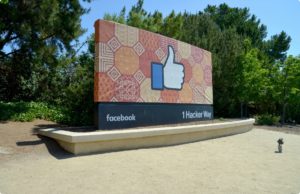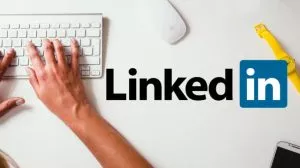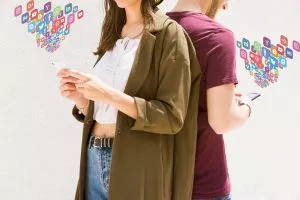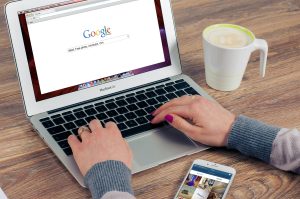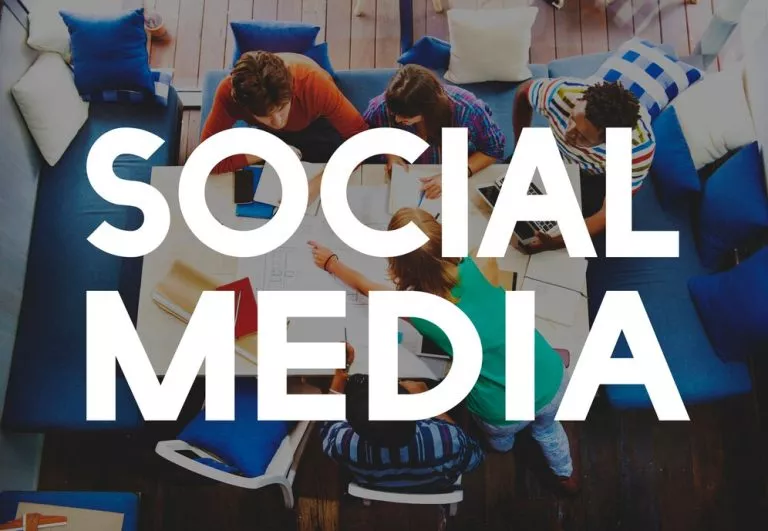
Latest banner trends and formats for platforms that actually work
Advertising, especially banner ads, is at the core of modern digital marketing. Each day, we are exposed to hundreds of banners, but only a few truly capture our attention and become memorable. Why does this happen? Successful banner ads are not only the result of excellent design but also choosing the right formats for specific platforms and adapting to current trends.
Let’s explore the modern banner formats and the latest trends that are truly effective on the most popular platforms like Google Ads, Meta (Facebook), Instagram, YouTube, LinkedIn, X (Twitter), Viber, Telegram, WhatsApp, and App Search Ads.
Why is it important to understand the latest banner advertising trends?
Advertising evolves rapidly, and staying on top means following the latest trends. A few years ago, banners with lots of text and bright elements were effective, but today, minimalism and flexible design are the new rules. Using outdated formats or ignoring trends can lead to inefficient ads and wasted budgets.
Modern trends are setting new standards. From animation to personalization, from responsive design to interactive elements, we will cover all the key aspects of banner advertising that contribute to success in 2024.
Trends shaping successful banners in 2024
Users have become more demanding, and competition for their attention is fiercer. Banners not only need to catch the eye but also evoke emotions, be adaptive, and personalized. Those who understand the new trends won’t get lost in the crowd.
1. Minimalism – less text, more space
In a fast-paced world, visual overload repels users. Minimalism has been a dominant trend for years and shows no signs of slowing down.
Simple design with minimal text and plenty of space allows focus on the essentials. The main principles of minimalism in banners: use of no more than two color schemes, short text, and plenty of white space to create visual harmony.
2. Animation and dynamic elements
Animation is a powerful tool to grab attention, increasing banner click-through rates by 30-50% compared to static banners.
Micro-animations, smooth movements, or color changes make banners more “alive” and engaging for users. However, it’s essential to avoid excessive dynamics to prevent distractions or annoyance. Balance and simplicity are key to successful animation.
3. Responsive banners
These tools automatically adapt to screen sizes, which is critical given that most users now access ads from mobile devices.
This isn’t just a trend; it’s a necessity. Besides screen size, it’s important to consider user behavior: on mobile devices, banners may feature larger elements for easier interaction on touchscreens.
4. Ad personalization
The essence of this approach is to deliver ads tailored to users’ interests, behavior, and needs. Personalized banners drive much higher engagement as they create the feeling of speaking directly to an individual.
Effective personalization strategies include:
- Dynamic content that changes based on the user’s previous actions.
- Targeting ads to specific audience groups based on age, gender, or geolocation.
- Behavior-based targeting on websites.
5. Interactivity
Interactive banners allow users to engage with the ad through polls, gamification elements, or simple mini-games, creating a sense of involvement. A compelling example is “hover banners” that respond to cursor movement or touch, making ads more dynamic and providing additional information without requiring users to leave the site.
6. Emotional design
Leveraging emotional triggers in ads is highly fashionable, as they influence users’ subconscious reactions. Happiness, surprise, or fear of missing out (FOMO) enhance engagement, while urgent calls to action like “Only today!” prompt quick decisions and increase click-through rates.
In the modern world of online marketing, brands must create content that not only grabs attention but captivates from the first glance.
Overview of banner formats for popular platforms
Each platform has its own banner format requirements, so it’s crucial to know which sizes work best for different devices. Being aware of these specifics allows you to create effective materials that look great on any screen.
Banner format table
| Platform | Banner format | Device |
|---|---|---|
| Google Ads | 300×250, 728×90 | Mobile, Tablet, Desktop |
| Meta & Instagram | 1080×1080 | Mobile, Tablet, Desktop |
| YouTube | 300×250 | Mobile, Tablet, Desktop |
| 1200×627 | Mobile, Tablet, Desktop | |
| X (Twitter) | 1200×675 | Mobile |
| Viber | 1080×1920 | Mobile |
| Telegram | 1080×1920 | Mobile |
| No support | Mobile | |
| App Search Ads | 300×250 | Mobile |
Google Ads
Google Ads is the most powerful platform for contextual advertising, offering a wide range of formats for different devices:
- Mobile: 320×50, 300×250;
- Tablets: 468×60, 728×90;
- Desktops: 300×600, 970×250. It allows creating responsive banners that automatically adjust to the user’s screen size.
Meta (Facebook) & Instagram
Both platforms support various banner formats, but the universal 1080×1080 square format is ideal for the news feed and mobile devices. Key devices include:
- Mobile: 1080×1080 (feed), 1080×1920 (Stories);
- Desktop: 1200×628;
- Tablets: 1080×1350. Instagram Stories supports vertical formats, making them more interactive and convenient for mobile viewing.
YouTube
As a video-oriented platform, YouTube is best suited for multimedia banners. Common sizes include:
- Mobile: 640×360;
- Tablets: 640×360;
- Desktop: 300×60, 300×250. Banners on YouTube appear during videos or on video pages, so they must be engaging and context-appropriate.
As a professional communication platform, LinkedIn requires banners that follow a restrained and professional style, typically 1200×627 for mobile and desktop devices. LinkedIn targets business audiences, so your banners should adhere to business etiquette.
X (Twitter)
X (Twitter) is a platform for short messages where banners need to be highly informative and concise:
- Mobile: 600×335;
- Desktop: 1200×675. Since users scroll quickly through the feed, it’s essential to create eye-catching banners with short, impactful messages.
Viber & Telegram
These messaging apps are used heavily for communication, so banners should be adapted for mobile screens — 1080×1920. Since most users access these platforms via smartphones, vertical formats are ideal for easy viewing on mobile devices.
At the time of writing, WhatsApp does not support traditional banner advertising formats. However, this may change in the future, so keep an eye on this platform’s development.
App Search Ads
For search app ads, it’s important to use compact, fast-loading banners that do not interfere with user experience:
- Mobile: 320×50, 300×250;
- Tablets: 468×60.
Banner formats are like “suits” tailored perfectly for different platforms and contexts. Square formats for Instagram, professional ones for LinkedIn, dynamic for YouTube – each banner serves its own purpose. The right format can make an ad message stand out and unforgettable.
Where to find ideas and images for banners: inspiration at your fingertips
If you need fresh solutions for creating banners, there are several sources where ideas and resources are abundant:
- Template platforms – tools like Canva, Crello, or Adobe Express not only provide ready-made templates but also serve as a source of inspiration for designers of all levels. You can find banners for any platform, adjust them to your style, and add a personal touch.
- Design communities – if you’re looking for more than just templates, check out Behance and Dribbble. These platforms showcase the work of the world’s top designers. Trends, styles, creative solutions – it’s all in one place. A perfect way to see what’s trending now and how to adapt these ideas to your projects.
- Free image libraries – to make your banners even more creative, high-quality photos are a must. Sites like Pexels, Unsplash, and Freepik offer millions of images you can download and use for free. It’s a real source of visual freshness for your projects.
Nothing beats unique images made specifically for your brand. Photograph products, people, or scenes that best reflect your marketing strategy. This helps create true authenticity and showcase your brand’s individuality.
Banner creation platforms: your new favorite tools
Here are a few platforms that will help you effortlessly create a masterpiece:
- Canva – a leader among graphic content creation platforms. Its vast template library and user-friendly interface allow you to quickly design banners of any format.
- Crello – an alternative to Canva, offering a variety of templates and tools for both static and animated banners.
- Adobe Express – a professional tool for creating high-quality banners with advanced customization options.
- Figma – ideal for teamwork, enabling real-time layout editing and quick adjustments.
- Bannersnack – a specialized platform for creating banners with a focus on animations, enhancing their appeal.
Don’t forget the importance of infographics and examples. In addition to templates and images, it’s often worth studying successful banner examples. Design platforms like Behance offer numerous works that showcase modern approaches to banner advertising. Learn from others’ solutions, test your own ideas, and create unique masterpieces that captivate, intrigue, and sell.
Tips for creating effective banners
Creating a banner is not just about design. It’s essential to consider technical aspects and understand your audience’s needs, which include:
- Clear call to action (CTA): use short and concise CTAs, like “Learn more” or “Buy now.”
- File size optimization: banners should load quickly, so optimizing images is key. The banner size should not exceed 150 KB.
- Testing on various devices: always test your banners on mobile devices, tablets, and desktops to ensure proper display.
- Color scheme: choose colors that align with your brand, but remember to maintain contrast for better readability.
By following banner format guidelines for each platform, you’ll create ad campaigns that capture attention, engage users, and deliver real results.
The future of banner advertising lies in adaptability, personalization, and interactivity. Creative banners that adjust to each screen and platform become more than just ads—they become a full part of the user experience. Even a small rectangle on the screen can be a powerful tool of influence if done right.
So, what’s next? It’s time to create banners that don’t just «exist»—they work!
